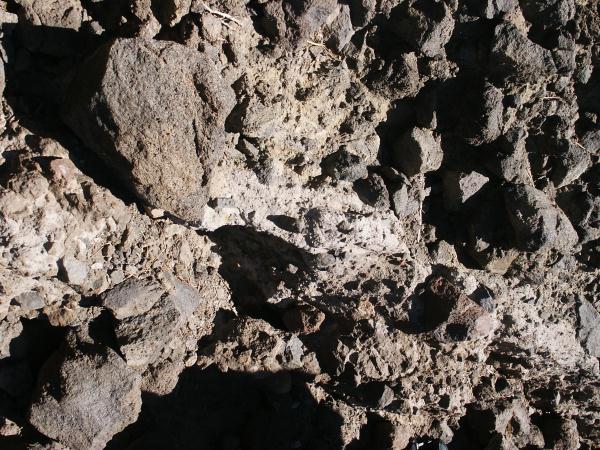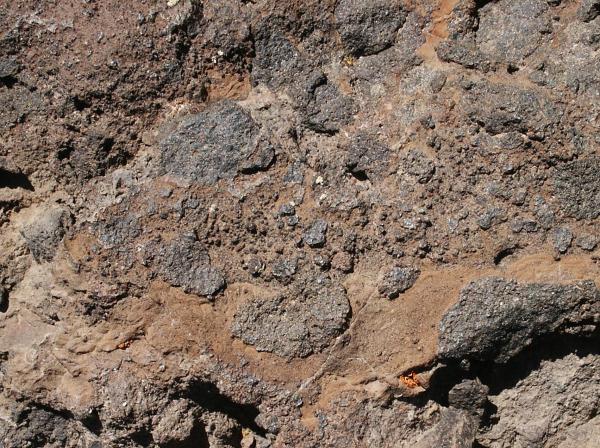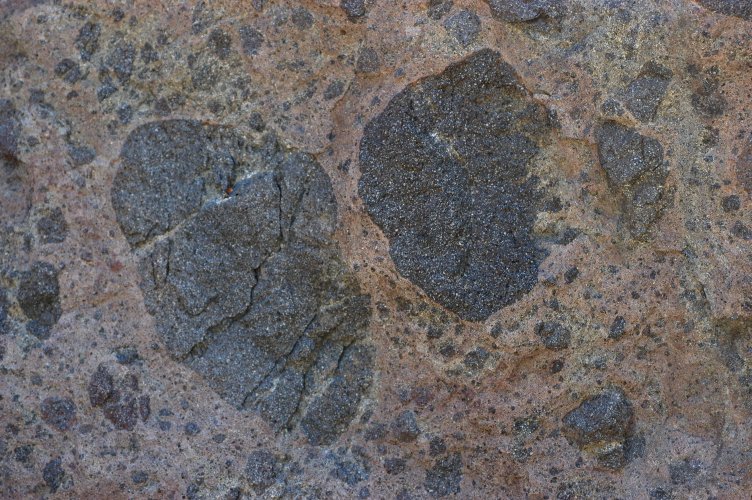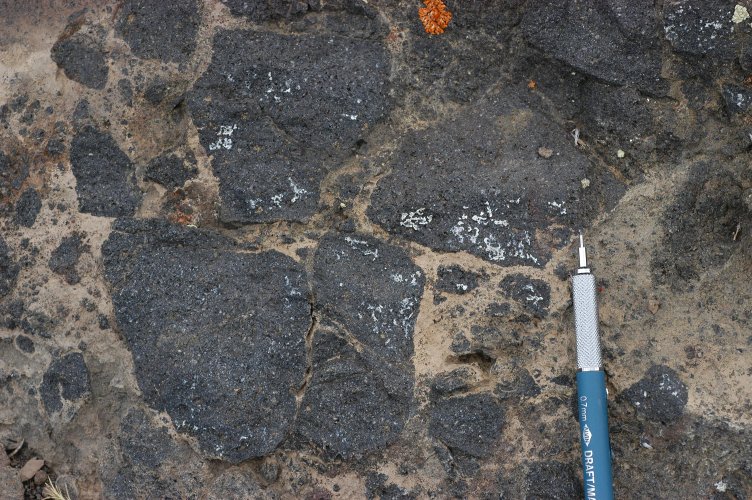The hike to the Two Sentinels is a little over a mile and boasts a
net elevation change of approximately 1000'. The trail is
accessible to the public and there is no parking or use fee.
The Two Sentinels formed during the Miocene, and is part of the
Mehrten Formation. The Miocene Mehrten Formation comprises a
voluminous, lithologically and compositionally variable but
dominantly andesitic, including basaltic andesite and
trachyandesite, volcaniclastic sequence formed from
subduction-related volcanism along the present crest of the Sierra
Nevada mountains in California. Near the crest, the formation is
dominated by primary volcaniclastic rocks, including numerous
proximal vent-filling and near-vent sequences, with decreasing
grain-size and increasing degree of reworking by sedimentary
processes (dominantly fluvial) down the flanks of the Sierra. Lava
flows and domes are not commonly preserved, even in vent-proximal
areas.
When you reach the Two Sentinels, take a moment to enjoy the
spectacular view of Kirkwood valley below you. When you are ready,
examine the Sentinels themselves. For this earthcache, we are going
to look at peperite within the Mehrten Formation.




Although disagreements exist as to the usage of the term
peperite, many current classifications of peperite may be
summarized by the definition outlined by White, et. al. (2000):
Peperite (n.): a genetic term applied to a rock formed
essentially in situ by disintegration of magma intruding and
mingling with unconsolidated or poorly consolidated, typically wet
sediments. The term also refers to similar mixtures generated by
the same processes operating at contacts of lavas and other hot
volcaniclastic deposits with such sediments.
Peperite forms when hot, fluid magma (or volcaniclastic) of any
composition ranging from felsic to intermediate to mafic intrudes
into or flows over and intimately mingles with an unconsolidated or
poorly consolidated sediment, giving rise to magma break-up. This
processes forms juvenile clasts of volcanic material and often
results in the destruction of original host sediment
structures.
The host sediment may be of any composition and may be cogenetic
with magma emplacement but more commonly is not. Juvenile clasts
within the peperite deposit may range from a few millimeters to
meters (megapeperite of Coira and Perez, 2002) in size. Peperite
deposits or domains range in volume from isolated, millimeter or
centimeter sized within associated deposits to extensive deposits
of up to several cubic kilometers. Frequently, peperite deposits
are located at the margins between the host sediment and an igneous
body such as domes , dikes, sills, lava or ash flows or conduits.
Such margins are typically irregular and may be glassy. Contacts
between the sediment, peperite domains and magma source may be
baked or display haloes of hydrothermal alteration.
One theory for fluidal peperite development hypothesizes that a
non-explosive fuel-coolant interaction (MFCI) takes place between
the wet, host sediment and the magma. As the magma intrudes into
wet sediment, it generates a thin, unstable, insulating vapor film.
In order for the vapor film to form, there must be sufficient
quantities of pore water and temperatures must be greater than the
Nukiyama critical temperature. At or below the Nukiyama
temperature, vapor films are unstable and rapid heat exchange
between the water and magma occurs. The rapid exchange of heat
allows the water to flash to steam and explosive eruptions occur.
Above the Nukiyama temperature, the temperature of the fuel (magma)
is much greater than the vaporization temperature of the coolant
(water). However, the vapor film insulates the water from the magma
and prevents the pore water from immediately flashing to steam.
Instead, transfer of heat energy from the magma to the liquid water
within the sediment raises the temperature of the water to a
metastable state. Spontaneous nucleation of this metastable fluid
forms the vapor film, which rapidly expands. As the film expands,
heat is transferred to the surrounding sediment. Sediment particles
act as heat sinks for some of the energy. When the vapor film has
cooled sufficiently, it condenses and collapses, transferring
energy to the surrounding fluid. This energy, coupled with an
influx of heat energy from the magma gives rise to a new vapor
film. At the same time, some of the thermal energy is converted
into kinetic energy at the vapor film locale, creating distortions
in the magma-sediment interface. If there is insufficient coolant
to transfer and redistribute the heat from the magma, an explosive
event may occur, but if peperite is formed, it is by definition
non-explosive.
In order to log this cache, you must:
1.Take a photo of an example of peperite. Describe some of the
characteristics of the rock that makes you believe that you are
seeing peperite. Is your photo of blocky (sharp, angular clasts,
often with jigsaw fit textures) or fluidal (round, globular,
elongated) peperite?
2.Look for evidence of the processes that might have occurred
during peperite formation. Remember what conditions are necessary
for peperite formation. In particular, look for evidence of hot
fluid flow. What do you see?
3.Bonus: Remember that the Mehrten formation is primarily andesitic
in composition. Can you identify any of the minerals that you
see?
The Two Sentinels is easily accessible via the Thunder Mountain
trail. Bushwacking is not necessary and is strongly discouraged.
Collection of rock samples is also highly discouraged. Please
adhere to the tenets of the Leave No Trace principles.